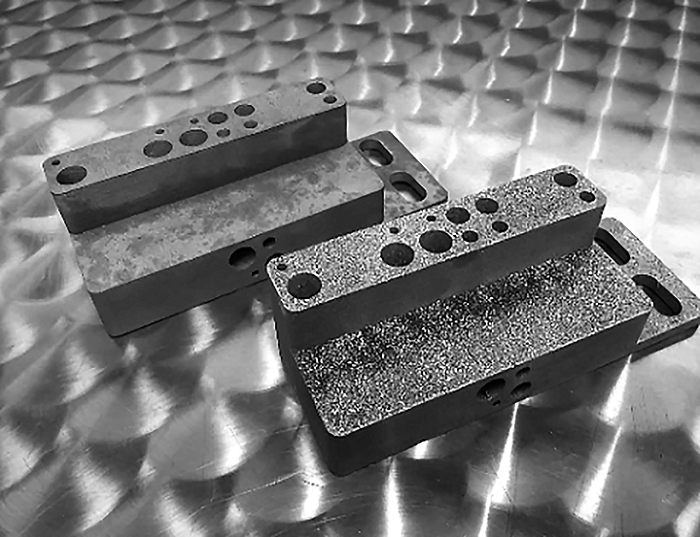ISO 7438 Bend Test for Heat-Treated and Surface-Modified Metals
The ISO 7438 bend test is a critical procedure used to evaluate the mechanical properties of heat-treated or surface-modified metals. This test assesses the ductility, flexibility, and integrity of materials after undergoing thermal treatment or post-processing. It is particularly useful in industries where material robustness and durability are paramount.
The testing process involves bending a specimen around a cylindrical mandrel to a specified angle while maintaining a specific curvature radius. The specimen's behavior during this bend test provides insights into its mechanical characteristics, which can be crucial for quality assurance and compliance with international standards.
Heat treatment is widely used in metal processing to alter the internal structure of materials, affecting their hardness, strength, ductility, and resistance to wear. Surface modifications such as plating, coating, or chemical conversion treatments also play a vital role in enhancing material properties for specific applications. The ISO 7438 bend test ensures that these processes do not compromise the mechanical integrity of the metal.
The test method is described in detail in ISO 7438. It specifies the dimensions and tolerances for specimens, the procedures for bending, and the criteria for evaluating the results. Compliance with this standard ensures that materials meet the required performance levels, which is essential for product reliability and safety.
The bend test can be performed on a variety of metals such as steel, aluminum, titanium, and nickel alloys. The choice of mandrel diameter and curvature radius depends on the type of metal being tested and its intended application. For instance, in aerospace applications, materials like titanium might require more stringent testing due to their critical role in structural integrity.
The process typically involves preparing the specimen by cutting it to the required dimensions, ensuring that any surface treatments are evenly applied. The specimens are then bent around a mandrel, and the resulting bend is visually inspected for any cracks or other defects. A detailed report is generated based on these observations, which can be used for quality assurance, process optimization, and compliance verification.
Understanding the nuances of this test method is crucial for those involved in material science, manufacturing, and quality control. Proper specimen preparation and adherence to standard procedures ensure accurate results that reflect the true mechanical properties of the materials being tested.
| Industry | Purpose |
|---|---|
| Aerospace | Evaluating material integrity for safety-critical components |
| Motorsports | Ensuring performance and reliability of lightweight materials |
| Biomedical | Verifying the durability of implants and prosthetics |
| Automotive | Aiding in the development of advanced alloys for engine components |
Industry Applications
- Aerospace: Ensuring the durability and reliability of critical components.
- Motorsports: Evaluating lightweight materials for high-performance applications.
- Biomedical: Verifying the integrity and longevity of implants and prosthetics.
- Automotive: Assisting in the development of advanced alloys for engine components.
The ISO 7438 bend test is essential for these industries as it helps manufacturers ensure that their materials meet stringent quality standards. This testing method plays a pivotal role in maintaining safety and performance, especially in critical applications like aerospace and motorsports.
Why Choose This Test
The ISO 7438 bend test offers several advantages for manufacturers and researchers working with heat-treated and surface-modified metals:
- Quality Assurance: Ensures that materials meet the required performance levels, enhancing product reliability.
- Process Optimization: Provides valuable insights into material behavior under specific conditions, aiding in process improvements.
- Compliance Verification: Helps ensure compliance with international standards and regulatory requirements.
- Risk Reduction: Identifies potential weaknesses early, reducing the risk of defects in final products.
The test is particularly useful for industries where material integrity and performance are critical. By using this method, manufacturers can confidently use heat-treated or surface-modified metals in their products, knowing that they meet stringent quality standards.
Environmental and Sustainability Contributions
The ISO 7438 bend test contributes to environmental sustainability by ensuring the reliability of materials used in critical applications. By identifying any weaknesses early in the manufacturing process, this test helps reduce waste and energy consumption associated with rework or scrap.
In addition, the test promotes the use of advanced materials that can withstand harsh environmental conditions, reducing the need for frequent replacements or repairs. This not only extends product life but also minimizes the ecological footprint by extending the service life of components and infrastructure.
The results of this testing method are particularly valuable in industries where material performance is critical to both safety and sustainability. By ensuring that materials meet stringent quality standards, manufacturers can contribute significantly to environmental stewardship and sustainable development.





